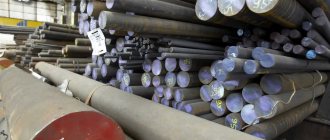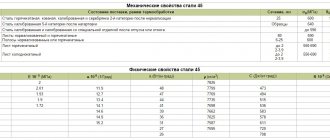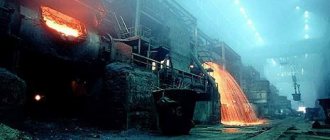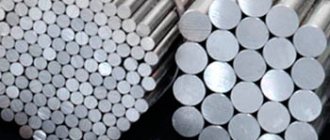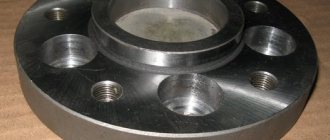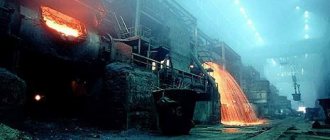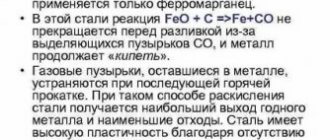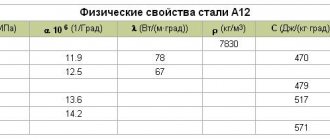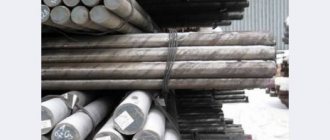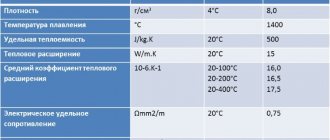Non-alloy steel alloy is the chemical term used to name two types of steel. Steel is a metal alloy. It is made up of iron and some other elements such as carbon. Unalloyed steels do not have elements added to the steel when it is remelted. Steel is widely used all over the world due to several reasons such as low cost, ease of manufacture, strength, etc. There are different grades of steel available according to their properties.
Alloy steel
is a type of steel and has a large number of other elements besides iron and carbon. The main difference between alloy and unalloyed steel is that in alloy steel, the remaining elements are added to iron during smelting whereas in unalloyed steel, no elements are added during smelting.
There are two main types of alloys as substitution alloys and interstitial alloys. When molten metal is used in the production of alloys, the sizes of the atoms will determine what type will be formed. If the metal atoms that come together to be mixed have relatively equal sizes, a substitute type of alloy is formed, but if one type of metal atom is smaller than another type, an intermediate alloy is formed.
Non-alloy tool steels
Corrosion-resistant martensitic steels20Х13
| AISI | ||
| 20Х13 | X20Cr13 (1.4021) | 420 |
General characteristics:
steel belongs to the martensitic class of the hypoeutectoid group.
After hardening it has a martensite structure. Welds satisfactorily. The greatest corrosion resistance of steel is achieved by heat treatment: hardening, tempering and polishing. Application:
facing and structural parts for devices operating in hot environments containing sulfur dioxide;
parts of increased ductility exposed to shock loads. Types of supplied products:
rolled round (8-160 mm), square (28-200 mm) sections, turned rods and with special surface finishing up to a circle of 70 mm, forged and rolled strip, sutunka.
Delivery condition:
annealed with a hardness of 126-197 HB; heat treatment: hardening from 1000-1050°C, cooling in air or oil; tempering at 660-770°C, cooling in air, oil or water
1.4021
| DIN 17440 |
| X20Cr13 |
Types of supplied products:
blooms, blanks sq. 100-120 mm, turned rods sq. 12-200 mm (with maximum deviations from the diameter - half the total tolerance according to DIN 1013);
rods 6-120 mm with polished surface h 10 - h13 or k 10 - k 13. Delivery condition:
annealed (A) - annealing at 730-780°C, cooling in a furnace or in air, hardening at 980-1030°C, cooling in air or oil; improved (QT700) - tempering at 650-750°C; improved (QT800) - tempering at 600-700°C.
40Х13
| GOST 5632-72 | DIN 1.4031 |
| 40Х13 | X38Cr13 |
General characteristics:
steel belongs to the martensitic class, which allows it to obtain high hardness after hardening and be used as a wear-resistant and elastic material.
Steel is not used for welded structures. Application:
after hardening and low tempering with a ground and polished surface - cutting, measuring and surgical instruments, springs, carburetor needles, household items.
In the condition after high tempering - bushings, axles, shafts, springs, springs, housings, axles, blades, tires of steam turbines; disks operating at temperatures up to 400-450°C; bolts, nuts and other parts operating in corrosive environments. Types of supplied products:
rolled round (8-200 mm), square (28-200 mm) sections, turned rods and with special surface finishing up to edge 70 mm, forged and rolled strip, sutunka.
Delivery condition:
annealed.
95Х18 (EI229)
| GOST 5632-72 |
| 95Х18 (EI229) |
General characteristics:
the steel belongs to the martensitic class with a high content of carbon and chromium.
It is highly resistant to alkaline solutions, nitric and acetic acids. The maximum hardness when quenched with oil cooling is 57-59 HRC. Density at 20°C - 7.75 10? kg/m?; thermal conductivity - 0.243·102 W/(m°C); specific heat capacity - 0.483·10? J/(kg°C) at 20-100°C. Beginning of intense oxidation at 750°C. Application:
Premium quality, corrosion-resistant bearings for oilfield equipment, bushings and other parts subject to heavy wear.
Types of products supplied:
rolled and forged products, round (8-160 mm), square (80-160 mm) blanks;
turned, ground rods with a diameter of 12-70 mm, steel with a special surface finish. 1.5-47 mm. Delivery condition:
heat treatment - hardening from 1000-1050°C, cooling in air or oil; tempering at 200-300°C, cooling in air or oil.
40Х9С2
| GOST 5632-72 | DIN | AISI/SAE |
| 40Х9С2 | X45CrSi 9-3 (1.4718) | HNV3 |
General characteristics:
heat-resistant and heat-resistant martensitic steel.
The temperature at which intense scale formation begins is 850°C. Resistant in sulfur-containing environments. Density at 20°C - 7.63·10? kg/m?. Application:
intake and exhaust valves for automobile and tractor engines, recuperator tubes, heat exchangers, grate bars.
Types of products supplied:
long products with round, square and strip sections;
calibrated rods. Delivery condition:
in annealed condition with a hardness of no more than HB 269.
20Х13Н4Г9
| GOST 5632-72 | DIN |
| 20Х13Н4Г9 | X2CrMnNiN17-7-5 (1.4371) |
General characteristics:
steel provides high performance properties in equipment for creating deep cold.
Prone to work hardening, the structure after quenching (1120-1150°C in water) consists of austenite and martensite with a predominance of the austenitic component. Heat treatment of metal at temperatures of 400-800°C promotes the release of Cr23C6 carbides, which, located predominantly at grain boundaries, reduce impact strength. It is corrosion resistant in atmospheric conditions up to 800°C. Application:
serves as a substitute for cold-rolled steel grades 12Х18Н9 and 17Х18Н9.
Used for lightweight and durable structures connected by electric spot welding. When using other types of welding (gas, electric arc, argon-arc), welded joints are susceptible to intergranular corrosion. Types of products supplied:
forged grade and round, square blanks 80-200 mm.
Delivery condition:
turned, ground rods and with special surface finishing.
25Х13Н2
| GOST 5632-72 |
| 25Х13Н2 |
General characteristics:
martensitic steel, high corrosion resistance.
The macrostructure of cast metal is with a small amount of alpha phase located along the grain boundaries. In deformed metal, the nature of the structure is preserved, the grain is fine, sulfides are located along the fiber. Application:
due to its good ductility, it is used for the manufacture of parts on automatic machines that operate in aggressive environments - hydraulic press valves, household items.
Types of supplied products:
rolled steel O8-75 mm, forged grade 80-200 mm, turned rods O12-70 mm, rods with special surface finishing O1.5-47 mm (also in accordance with TU 14-1-721-73)
Delivery condition:
in annealed condition.
14Х17Н2 (EI268)
| GOST 5632-72 | DIN | AISI/SAE |
| 14Х17Н2 (EI268) | X20Cr17Ni2 (1.4057) | 431 |
General characteristics:
corrosion-resistant and heat-resistant martensitic steel: weldable to a limited extent, has the greatest corrosion resistance after quenching with high tempering.
Density at 20°C - 7.7x10? kg/m? Application:
used as steel with fairly satisfactory technological properties in the chemical, aviation and other industries - working blades, disks, shafts, bushings, flanges, fasteners and other parts of compressor machines operating in gas.
Welded joints in the heat-affected zone have reduced resistance to MCC and general corrosion, therefore, after welding, tempering is required at 680-700°C for 30-60 minutes. Welding method: manual arc. Types of products supplied:
long products of round, square and rectangular sections, calibrated bars.
Delivery condition:
in annealed condition: hardness no more than HB 285.
Ferritic corrosion steels
12Х17
| GOST 5632-72 | DIN | AISI/SAE |
| 12Х17 | X6Cr17 (1.4057) | 430 |
General characteristics:
steel is corrosion-resistant and heat-resistant up to 850°C, ferritic class.
Weldability is satisfactory. Heat resistance—temperature of intense scaling in air is 900°C. Density at 20°C - 7.7x10? kg/m? Application:
products operating mainly in oxidizing environments: household items and kitchen utensils;
equipment for food and light industry factories; adsorption towers, heat exchangers for hot nitrous gases and hot nitric acid, fasteners, rolls, bushings, etc.; parts of apparatus and vessels operating in dilute solutions of nitric, acetic, and citric acids; in solutions of salts with oxidizing properties. Recommended as a substitute for steel 12Х18Н9. Types of supplied products:
rolled bars with round (O8-150 mm), square (28-200 mm) sections, calibrated steel, turned and ground rods with special surface finishing.
Delivery condition:
in annealed condition: hardness 126-197 HB.
Corrosion steels, austenitic
08Х18Н10Т
| GOST 5632-72 | DIN | AISI/SAE |
| 08Х18Н10Т | X6CrNiTi18.10 (1.4541) | 321 |
General characteristics:
corrosion-resistant and heat-resistant austenitic steel.
Steel in a hardened state is not prone to intergranular corrosion (ICC). After heating in the temperature range of 600-650°C, it may acquire a tendency to MCC. It welds well with all types of welding. Density at 20°C - 7.9x10?3 kg/m? Application:
recommended for the manufacture of welded products in highly aggressive environments: in solutions of nitric, phosphoric, acetic acids: in solutions of alkalis and salts.
Heat exchangers, forgings of power equipment, fastenings with operating temperatures up to 600°C. Types of supplied products:
long rolled products with round (O12-200 mm), square (28-200 mm square) sections, turned rods and with special surface finishing, forged and rolled strip, sutunka.
12Х18Н10Т
| GOST 5632-72 |
| 12Х18Н10Т |
General characteristics:
corrosion-resistant steel of austenitic class.
It has high strength and resistance to knife corrosion in welded joints. Application:
used for the manufacture of welded equipment in various industries.
Types of products supplied::
rolled round (O8-160 mm), square (28-200 mm square) sections, turned rods and with special surface finishing, forged and rolled strip, sutunka.
10Х17Н13М2Т (EI448)
| GOST 5632-72 | DIN | AISI/SAE |
| 10Х17Н13М2Т | X6CrNiMoTi17.122 (1.4571) | 316Ti |
General characteristics:
corrosion-resistant steel of austenitic class.
It can be stamped well and is not prone to intergranular corrosion. Density at 20°C - 7.9x10? kg/m? Application:
recommended for the manufacture of welded structures operating in boiling phosphoric, sulfuric, 10% acetic acid and sulfuric acid environments, parts of turbines, compressors, welding wire.
Types of supplied products:
rolled round (O12-160 mm), square (28-200 mm square) sections, turned rods and with special surface finishing, forged and rolled strip, sutunka.
1.4571
| DIN 17440 | GOST 5632-72 | ASTM-479 |
| 1.4571 (X6CrNiMoTi 17.122) | 10Х17Н13М2Т | 316Ti |
Types of supplied products:
square billet, turned bars sq. 12-160 mm, bars with special surface finishing with maximum deviations h10-h12 edge 1.5-70 mm
Delivery condition: billet - without heat treatment; rods are in a hardened state.
Non-alloy steel
is a type of steel that has other elements added during melting. Smelting is the process of extracting metal from ore. This process involves heating and smelting the ore. During smelting, it removes impurities present in iron ore. The melting process is carried out several times in order to remove carbon deposits. If too much carbon is present, it is not an unalloyed steel. The carbon content should be up to approximately 1%.
In the production of alloy steel, some elements such as chromium, cobalt are added to iron, but in the production of unalloy steel, no other elements are added. Because there are no other elements besides iron and a small amount of carbon, unalloyed steel has less strength and less flexibility. Therefore, this steel must undergo a process called tempering. Hardening is the process of heating iron at a high temperature in order to make it susceptible to the formation of cracks that occur during welding.
Non-alloy steel is used in the field of construction where high strength is required from metals. Non-alloy steel bars are used to strengthen concrete, to make gates, fences, etc.
Conclusion An alloy is a mixture or mixtures of two or more metallic components. These may be homogeneous or heterogeneous. Alloy steel is a type of steel that includes iron, carbon and some other elements in its chemical composition. The main difference between alloy and unalloy steel is that alloy steel is composed of iron and other elements during melting, while unalloy steel is without additional elements.
This page shows the technical, mechanical and other properties, as well as the characteristics of steel grade.
Unalloyed and low alloy steel
Steel can generally be described as an alloy of iron (Fe) and carbon (C). Iron is the main component in most types of steel. There are 3 classes of steel: - unalloyed steel (contains 1% alloying elements), which includes mild, carbon and carbon-manganese steel; - low-alloy steel (contains 1 - 5% alloying elements); — high-alloy steel (contains more than 5% alloying elements);
| Description | Solution | Examples |
| Connection of small diameter steel pipes (less than 30mm), where a capillary connection can be used. | AG-60 AG-45 | |
| Steel pipes of small diameter (up to 160 mm) with a wall thickness of up to 3 mm, forming an L-shaped or T-shaped connection (flange to pipe). | MS MS | |
| Larger steel pipes (over 160 mm) with a wall thickness of more than 3 mm, forming an I-, V- or T-shaped butt joint. | GPO GPR MS | |
| Connection of galvanized steel pipes forming a V-shaped butt joint; the edges at the junction are rounded | FC-BRONZE BRONZE | |
| Galvanized sheet steel structures such as air ducts and air ducts | FC-BRONZE BRONZE | |
| Welding of thin-sheet steel structures, such as tanks and linings | GPO/GPR MS MS | |
| Welding mild steel parts for repair purposes | GPO LH LHV | |
| Making smaller steel parts such as shelves, stairs and gangways from mild steel | GPO GPR LH | |
| Welding brackets, brackets and holding welded structures before full welding | GPO GPR LH | |
| Fabrication of larger structures and carrying out repair work such as welding mild steel bulkheads and decks in all positions. | GPO GPR LH | |
| For quickly building up large welds in the lower position on mild steel structures. | HPO | |
| Repair welding of low-alloy ship steel used for the manufacture of hulls, beams, decks, bulkheads, racks, tanks, holds, hatch covers, frames | LH LHV | |
| Steel experiencing vibration, tension and sudden loading. Pipes for sea water, steam and cargo pipeline are made of low alloy steel | LH LHV | |
| Deck and engine room auxiliary mechanisms; welded to the deck or removable decking of a ship | LH LHV | |
| Welding on cranes and lifting mechanisms | LH LHV TENSILE | |
| Boiler pipes and plates made of heat-resistant chromium-nickel steel | LHT ICROMO | |
| Lifting loops experiencing sudden loads | LH LHV TENSILE | |
| Welding gaps and cracks in cast steel. See definition of metals. where it is described how to distinguish cast steel from cast iron | LH LHV TENSILE | |
| Build up deposition on cast steel parts or machined low alloy steel parts where material has been lost | LH LHV TENSILE |
How to decipher steel grade
Steel, cast iron and alloys of non-ferrous metals are subject to mandatory marking. There are more than 1.5 thousand different types of steels and alloys made from them in the world.
Alloyed steels , unlike unalloyed steels, have a slightly different designation, since they contain elements that are specially introduced in certain quantities to ensure the required physical or mechanical properties. Eg:
- chromium (Cr) increases hardness and strength
- Nickel (Ni) provides corrosion resistance and increases hardenability
- Cobalt (Co) improves heat resistance and increases impact resistance
- Niobium (Nb) helps improve acid resistance and reduces corrosion in welded structures.
That is why it is customary to include in the names of alloy steels the chemical elements present in the composition and their percentage content. Chemical elements in such steel grades are designated by Russian letters given in the table.
| X-chrome | A-nitrogen |
| C-silicon | N-nickel |
| D-copper | M-molybdenum |
| T-titanium | K-cobalt |
| B-tungsten | B-niobium |
| G-manganese | E-selenium |
| F-vanadium | C-zirconium |
| R-boron | U-aluminum |
There is also a marking H , which tells us that the alloy contains rare earth metals, such as cerium, lanthanum, neodymium and others. Cerium (Ce) affects the strength and ductility of steel, and neodymium (Nd) and lanthanum (La) reduce porosity and sulfur content in steel and refine the grain.
An example of decoding steel grade 12Х18Н10Т
12Х18Н10Т is a popular austenitic steel, which is used in welding machines operating in dilute acid solutions, in solutions of alkalis and salts, as well as in parts operating under high pressure and in a wide temperature range. So, what do these mysterious symbols in the name mean, and how to combine them correctly?
The two numbers at the very beginning of the alloy steel grade are the average carbon content in hundredths of a percent. In our case, the carbon content is 0.12%. Sometimes, instead of two numbers, there is only one: it shows how much carbon (C) is contained in tenths of a percent. If there are no numbers at the beginning of the steel grade, this means that there is a fairly decent amount of carbon in it - from 1% and above.
The letter X and the number 18 following it indicate that this brand contains 18% chromium. Please note: the ratio of an element in fractions of a percent expresses only the first number at the beginning of the mark, and this only applies to carbon! All other numbers present in the name express the number of specific elements as a percentage.
Combination H10 follows. As you may have guessed, this is 10% nickel.
What is the difference?
The main difference between Low Alloy Steel and High Alloy Steel is that Low Alloy Steels contain less than 0.25% alloying element whereas High Alloy Steels have more than 10% alloying element . In addition to dividing into low-alloy and high-alloy steel, it is also divided according to the degree of alloying into medium-alloy. In this steel, the amount of alloying elements ranges from 2.5 to 10%)
An alloy is a mixture of two or more elements. It is produced by mixing molten metal with some other elements (metals or non-metals or both) to produce a material that has improved properties over the original metal. Low alloy steel and high alloy steel are two types of iron alloys with alloying elements. The most popular alloying elements in these steels are: nickel (Ni), copper (Cu), titanium (Ti) and vanadium (V), nitrogen (N), etc.
Content
- Overview and main differences
- What is Low Alloy Steel
- What is High Alloy Steel
- What is the difference between Low Alloy Steel and High Alloy Steel
- Conclusion
What is Low Alloy Steel?
Low alloy steel is a type of alloy steel whose properties are improved compared to carbon steel. For example, this alloy has better mechanical properties and greater corrosion resistance than carbon steel. The carbon content of low alloy steel is less than 0.2%. The most common alloying elements in this steel are: Nickel (Ni), Chromium (Cr), Molybdenum (Mo), Tungsten (V), Boron (B), Tungsten (W) and Copper (Cu).
Sheet steel
In most cases, the manufacturing process of these alloy steels includes heat treatment and tempering (for normalization). But now, there is a tendency to harden and temper. In addition, almost all low alloy steel materials are weldable. However, the material sometimes requires treatment before or after welding (to avoid cracking).
Some advantages of low alloy steel:
- Yield strength is higher
- High tensile strength
- Higher resistance to oxidation and corrosion
- Low cold brittleness threshold
